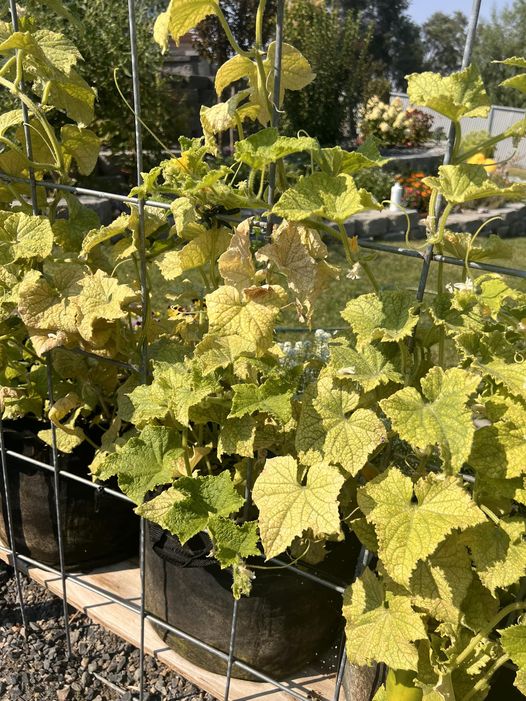
Cucumbers are a staple in gardens and kitchens alike, prized for their crisp texture and refreshing taste. However, a common issue that can plague cucumber plants is the yellowing of their leaves. This seemingly simple problem can actually be indicative of several underlying issues, ranging from nutrient deficiencies to pest infestations. Understanding the causes and finding the right solutions can help you maintain a healthy and productive cucumber crop. In this article, we’ll delve into the reasons behind cucumber yellowing leaves and explore practical solutions to keep your plants vibrant and thriving.
What Causes Cucumber Leaves to Turn Yellow?
Yellowing cucumber leaves can be a red flag for various issues. Let’s break down the most common causes:
1. Nutrient Deficiencies
Cucumbers are heavy feeders and require a balanced diet of nutrients to grow healthily. A lack of essential nutrients can lead to yellowing leaves. Key deficiencies include:
- Nitrogen Deficiency: Nitrogen is crucial for leaf growth. A shortage can cause older leaves to turn yellow while new leaves remain green.
- Potassium Deficiency: Potassium helps regulate various plant functions, including photosynthesis. Deficiency often results in yellowing at the edges of leaves, sometimes accompanied by brown spots.
- Magnesium Deficiency: Magnesium is a central component of chlorophyll. Without it, leaves may develop interveinal chlorosis (yellowing between the veins).
2. Overwatering or Poor Drainage
Cucumbers need consistent moisture but can’t tolerate waterlogged soil. Overwatering or poorly draining soil can lead to root rot and subsequent yellowing of the leaves.
3. Pest Infestations
Pests such as aphids, spider mites, and cucumber beetles can stress cucumber plants, leading to yellowing leaves. These pests often feed on the plant’s sap, causing damage and nutrient imbalances.
4. Diseases
Several diseases can cause cucumber leaves to turn yellow, including:
- Powdery Mildew: This fungal disease manifests as white, powdery spots on leaves and can lead to yellowing and leaf drop.
- Downy Mildew: Another fungal issue, downy mildew causes yellowing and wilting, often with a grayish, fuzzy appearance on the underside of leaves.
- Bacterial Wilt: Spread by cucumber beetles, this disease causes wilting and yellowing of leaves, often leading to plant death.
5. Environmental Stress
Extreme temperatures, either too hot or too cold, can stress cucumber plants and result in yellowing leaves. Additionally, sudden changes in weather conditions can affect plant health.
How Can You Address Yellowing Cucumber Leaves?
Now that we’ve pinpointed the potential causes, let’s explore effective solutions to address each issue.
1. Correcting Nutrient Deficiencies
To address nutrient deficiencies:
- Nitrogen Deficiency: Apply a balanced fertilizer with a higher nitrogen content or use compost to boost nitrogen levels in the soil.
- Potassium Deficiency: Use a potassium-rich fertilizer or add organic sources like banana peels or wood ash to your soil.
- Magnesium Deficiency: Epsom salts (magnesium sulfate) can be applied to the soil or used as a foliar spray to correct magnesium deficiencies.
2. Managing Watering Practices
To prevent overwatering:
- Check Soil Moisture: Use a moisture meter or check soil by hand. Ensure the top inch of soil is dry before watering again.
- Improve Drainage: Ensure that your garden beds or containers have proper drainage. Raised beds or adding organic matter can help with soil drainage.
3. Controlling Pests
To manage pest infestations:
- Insecticidal Soap: This can be effective against aphids and spider mites. Spray it directly on the pests.
- Neem Oil: This natural pesticide works on various pests and can also help manage fungal issues.
- Handpicking: For larger pests like cucumber beetles, manual removal can be an effective method.
4. Treating Diseases
To combat diseases:
- Powdery Mildew: Improve air circulation around plants and apply fungicides specifically designed for powdery mildew.
- Downy Mildew: Remove and dispose of affected leaves. Apply fungicides and ensure proper plant spacing to enhance air flow.
- Bacterial Wilt: Remove infected plants immediately to prevent the spread. Use insecticides to control cucumber beetles.
5. Mitigating Environmental Stress
To minimize environmental stress:
- Shade Cloth: In hot climates, use shade cloth to protect plants from extreme heat.
- Mulching: Apply mulch to maintain soil temperature and moisture levels.
Conclusion
Cucumber yellowing leaves can be a perplexing problem, but with a bit of detective work and the right approach, you can restore your plants to health. By understanding the causes and implementing effective solutions, you’ll ensure that your cucumber plants remain vibrant and productive. Keep an eye on your plants, and don’t hesitate to adjust your care routine as needed. With proper attention and care, your cucumbers will thrive, providing you with fresh, crisp vegetables throughout the growing season.
